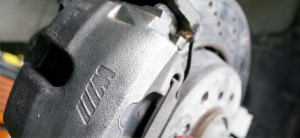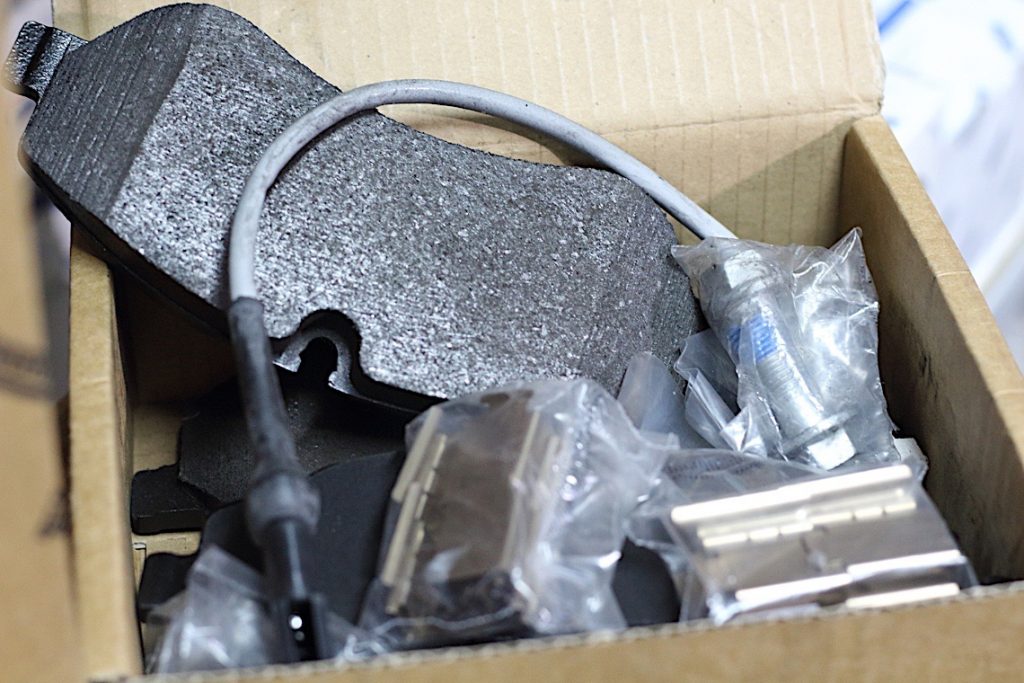 I recently had a friend come to me with a set of brake pads for his BMW M3 for me to install. These were super aggressive pads that belonged on a race car and not a street car. I knew if I installed them I would be replacing them in a week or two because of the noise.
I recently had a friend come to me with a set of brake pads for his BMW M3 for me to install. These were super aggressive pads that belonged on a race car and not a street car. I knew if I installed them I would be replacing them in a week or two because of the noise.
“What do you dislike or like about your current brakes?” I asked. He said he was not having problems or issues. It was the usual glory story from a forum where a guy installed them on his car and they made the vehicle stop on a dime or improved their lap time. He had to have them because they would “bite,” what ever that means…
I explained in plain and simple terms, a friction material with a higher coefficient of friction or µ will use less pedal pressure to stop the vehicle. With lower pedal pressures, the driver’s right foot may be thinking, “These are really great brakes compared to my old friction material.” But, it goes much deeper than that when it comes to true high-performance brake pads.
High performance is an over used phrase in brake pad catalogs because it is both subjective and relative. The litmus test for most high-performance pads is if the friction material has the characteristics to meet or exceed the OEM specifications for coefficient of friction and/or temperature.
One defining characteristic of some high-performance pads is the backing plate. Backing plates can play a distinct role in creating a positive pedal feel and stopping ability. The backing plate creates a foundation for the friction material that must be stiff and stable. If a backing plate is flexing, the friction material is not in full contact with the rotor. This can cause longer stops, a softer brake pedal, and it increases the potential for unwanted noise.
High-performance backing plates might use thicker and better quality steel, but that is impossible to see. One visual clue is on the back of the pad. Look at the holes for integral molding (IM) on the backing plate. These holes might be in a different configuration than a conventional pad. With fewer or a different configuration of holes, the manufacturer can make a stiffer foundation for the friction material.
Some pads use backing plates without any holes. Without the IM holes, the backing plate is theoretically stiffer. These backing plates use mechanical attachment methods to attach the material to the pad. In some cases, the backing plate may use special surface treatments in conjunction with an adhesive to eliminate the IM holes.
Fade resistance is another feature of high performance pads. Brake fade can be caused by the out-gassing of the pad that creates a boundary layer of gasses between the pad and rotor. This happens when water, uncured resins and other components are heated to the point that they generate gases. The gases create a barrier between the pads a rotor that prevents friction from being generated.
I told him they may be near impossible to deal with on the street because they do not reach the optimal operating temperature during normal driving. But, when they are warm, the braking performance of the vehicle is greatly increased. Also, these high µ friction materials have superior resistance to fade. Noise? Some of these friction materials can produce a lot of noise when they are applied and even when they are not. But, they are made for racetracks and not the street.
I installed the pads. After two weeks he gave me a call and said that his wife was going to divorce him because of the pads. He said he could never use the race pads to their full potential. We went with a pad that had better cold torque stopping ability. These were designed for the weekend warrior. These pads will not have the same overall coefficient of friction the racing brake pad, but at lower temperatures they will generate more brake torque and be more consistent as temperatures increase. His wife was happy.
